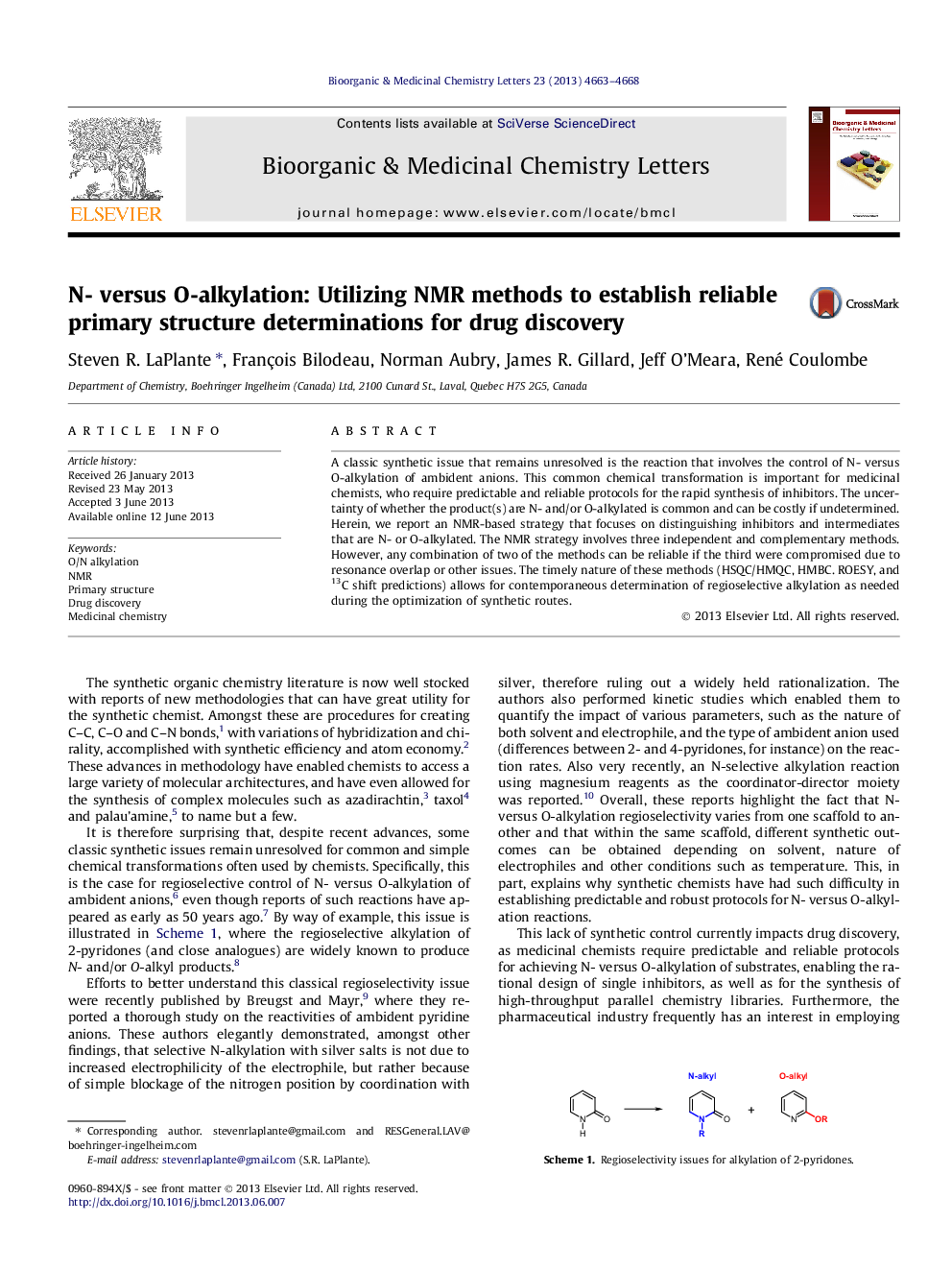| Article ID | Journal | Published Year | Pages | File Type |
|---|---|---|---|---|
| 1372310 | Bioorganic & Medicinal Chemistry Letters | 2013 | 6 Pages |
A classic synthetic issue that remains unresolved is the reaction that involves the control of N- versus O-alkylation of ambident anions. This common chemical transformation is important for medicinal chemists, who require predictable and reliable protocols for the rapid synthesis of inhibitors. The uncertainty of whether the product(s) are N- and/or O-alkylated is common and can be costly if undetermined. Herein, we report an NMR-based strategy that focuses on distinguishing inhibitors and intermediates that are N- or O-alkylated. The NMR strategy involves three independent and complementary methods. However, any combination of two of the methods can be reliable if the third were compromised due to resonance overlap or other issues. The timely nature of these methods (HSQC/HMQC, HMBC. ROESY, and 13C shift predictions) allows for contemporaneous determination of regioselective alkylation as needed during the optimization of synthetic routes.
Graphical abstractFigure optionsDownload full-size imageDownload as PowerPoint slide
